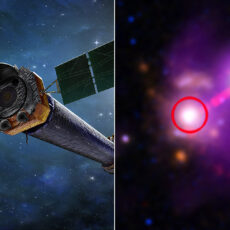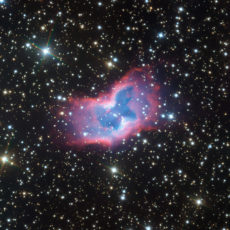
NASA’s Solar Dynamics Observatory (SDO) captured the Sun emitting a strong X5.0 flare that peaked at 4:55 p.m. EST, on Dec. 31, 2023. It can be seen in the bright flash on the far left, but the image actually shows a subset of extreme ultraviolet light that highlights the extremely hot material in flares,colorized in yellow and orange.

If you’re unfamiliar with solar flares, they are essentially powerful bursts of energy that can impact radio communications, electric power grids, navigation signals, and also pose risks to spacecraft as well as astronauts. This X5.0 flare (R3 strong radio blackout) was the strongest observed since September 2017.
- BRIGHT, SHARP VIEWS ANYWHERE: Unlike many beginner telescopes, this quality refractor features fully coated glass lenses and a 70mm aperture for...
- PERFECT FIRST TELESCOPE FOR BEGINNERS: Designed for adults and kids to enjoy together, this beginner-friendly telescope sets up in minutes and...
- EASY NO-TOOL SETUP: No complicated assembly or tools needed. The full-height tripod and telescope tube set up in seconds and pack neatly into the...
NASA works as a research arm of the nation’s space weather effort. NASA observes the Sun and our space environment constantly with a fleet of spacecraft that study everything from the Sun’s activity to the solar atmosphere, and to the particles and magnetic fields in the space surrounding Earth,” said Denise Hill, Strategic Communications & Outreach Lead at NASA.
[Source]













